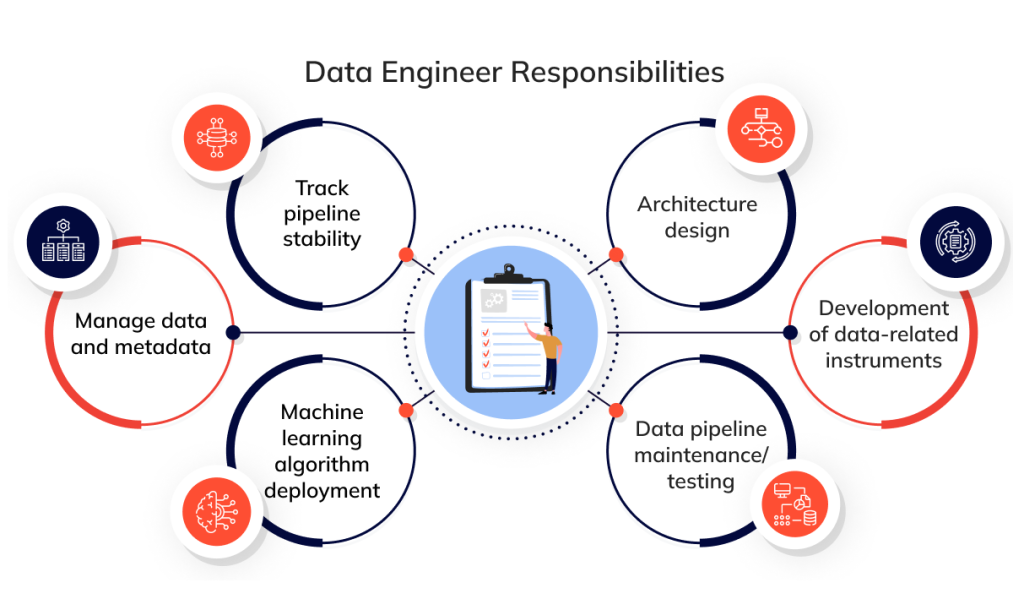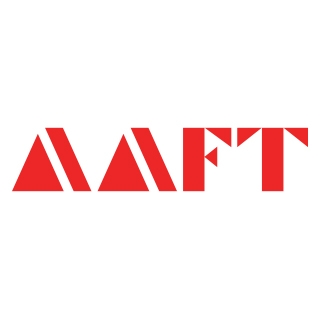Top 5 Programming Languages For Data Engineers
There are multiple programming languages used by professionals for various purposes. While some languages like Java are ideal for web development and mobile applications, others like SQL and Python are widely used for AI, machine learning, and automation.
Getting acquainted with different programming languages is the most crucial step in building a successful career in data science engineering.
Read ahead to learn about the top 5 programming languages for data engineers and how they can help build efficient data systems.
What is A Programming Language?
Do you want free career counseling?
Ignite Your Ambitions- Seize the Opportunity for a Free Career Counseling Session.
- 30+ Years in Education
- 250+ Faculties
- 30K+ Alumni Network
- 10th in World Ranking
- 1000+ Celebrity
- 120+ Countries Students Enrolled
A programming language differs from the languages we speak, read, and write. Think of it like a way of communicating tasks and their processes to computers using a predetermined set of symbols, keywords, punctuations, and syntax that help write structured code.
More advanced and sophisticated programming languages available today can communicate in a more natural and human-like language, streamlining the workflow and making the job more convenient and accessible.
What are the Types of Programming languages?
There are several ways to classify programming languages, including how easy they are to understand (low and high-level), where they are used (Front-end and Back-end), flexibility and interpretation (interpreted and compiled), and so on.
Book Now →
- Scripting Languages
Scripted languages are interpreted, meaning, computers read them line by line, following each instruction.
Read Also: How a Data Science Course Can Kickstart Your Career in Tech
Data engineers use these for automation, quick tasks, and managing rapid and dynamic content.
Do you want free career counseling?
Ignite Your Ambitions- Seize the Opportunity for a Free Career Counseling Session.Some of the most well-known scripting languages include –
- Python
- Javascript
- Ruby
- PHP
- Procedural Languages
Procedural languages are step-oriented or process-oriented.
They break down codes into fragments, each of which is a step or sequence that will allow the computer to complete the task.
The languages are characterised by their pre-determined sequential arrangement and emphasis on focusing on each step rather than the entire function.
Date engineers often rely on procedural languages like –
- Java
- C
- C++
- Pascal
- Functional Languages
In contrast to procedural languages that focus on ‘how’ to follow the steps, functional languages focus on ‘what’ the task or function is.
Each function is meant for a particular task that delivers a suitable result. If the function changes, the results will change, too.
These languages are useful for mathematics-heavy functions, statistical analyses, AI research, and Data analysis.
Key examples of functional languages are –
- Elixir
- Haskell
- F#
- Scala
- Logic Programming Languages
In logic programming languages, instead of instructing the computer how to perform a function, data engineers feed facts (what’s true) and specify a set of rules.
These inputs are then analyzed using logical reasoning, which helps complete tasks.
The language is declarative and relies on defining relationships, information, and ‘fundamental truths’. This makes the language suitable for artificial intelligence, knowledge representation, and database management.
Examples of logic programming languages include –
- Datalog
- Prolog
- Absys
- Object-Oriented Programming Languages
Object-oriented Programming or OOP Languages characterize each program or set of instructions as an object with its own methods, attributes, data, and functions.
These languages enable –
- Keeping the data safe by limiting external access and only manipulating parts of it. This is called encapsulation.
- A class (sometimes referred to as Child class) to inherit or use data or parts of data from another class (also called Parent class). This is called Inheritance.
- Polymorphism – a method/function to work in multiple ways depending on the object and its specifications.
- Hiding complex details and only showing the necessary features to the user, also known as abstraction.
Examples of OOP languages include –
- C++
- Python
- Java
- PHP
What is The Role of Data Engineers in the Modern Data-Centric World?
Data engineers form the backbone of the digital world. They build infrastructure and complex databases, and automated models that help collect, clean, and process large amounts of data. They help analyze real-time data while managing storage systems and ensuring data quality and privacy.
Here are some of the key roles of data engineers across industries –
- Building Important Data Infrastructure
Data infrastructures are hardware, software, workflows, data collection methods, and connections and networks that help transfer data.
Data engineers are responsible for creating these data infrastructures capable of handling new demands, managing a company or organization’s data input and output needs, and ensuring the systems are efficient and their results are scalable.
Read Also: Top Data Science Courses to Boost Your Career in 2025

- Data Storage and Management
Data Engineers build systems for storing and managing data by developing databases and systems that help store and manage vast quantities of data.
They develop automated channels, also called pipelines, for collecting and loading data from different sources and transferring them into a single system.
- Monitoring Data Systems
Once data infrastructure and storage systems are in place, these need regular audit, update, and maintenance.
Data engineers track performance, study metrics, create dashboards, identify issues, rectify any errors, and keep these systems up-to-date for maximum efficiency.
- Enabling Data Streaming
Data streaming is a method that enables real-time processing of data that continuously flows from different sources.
This is characterized by high volume and speed and is particularly useful in fraud detection, cybersecurity, identifying trends and patterns, and analyzing the financial market.
Professionals who specialize in data engineering help create pipelines, choose streaming platforms, identify sources, and implement data collection codes and processes to ensure a smooth workflow.
- Ensuring Data Quality
Data engineers check for inconsistencies and duplicacies in data, cleanse it, input missing data, and rectify errors.
They make sure the data is ready for visualizing, processing, and analyzing, and create dashboards to represent data clearly and concisely.
Top 5 Programming Languages for Data Engineers
- SQL
In SQL, or Structured Query Language, data engineers can use different commands for inserting new records, updating existing information, deleting records, and querying to manage relational databases.
Useful For – Powering backend systems, building and managing databases, data analysis, automation, and ensuring user security.
Read Also: Top 10 Career Options to Pursue in 2025
Advantage – SQL allows faster, precise, and more efficient management of a large quantity of data using simple commands.
- Python
Python is a high-level and versatile programming language that is easy to read and understand, and is widely used by big tech companies like Google, Meta, and Spotify.
The language is characterized by its built-in library, OOP support, and cross-platform usage.
Useful For – AI and ML, software testing, automation, prototyping, web development, and complex data analysis.
Advantage – Python’s simple and precise structure, vast library, and cross-platform compatibility make it beginner-friendly and highly versatile, and hence a very popular choice in the industry.
- Scala
Scala combines Object-Oriented Programming and functional programming. It uses the JVM (Java Virtual Machine) to run, and works efficiently together with Java code, also known as interoperability.
It is known for its clear structure and concise syntax that allow developers to write “less” code.
Useful For – Real-time data analytics, developing distributed systems, building scalable platforms, web development, and big data processing.
Advantage – It helps simplify the process of building a scalable application, helps detect errors early, and makes the code less prone to bugs.
- R
R is a software environment and an open-source programming language that is widely used by data scientists, researchers, and statisticians to visualize and analyze data.
It is known for its powerful libraries and its ability to work with other languages like Python and SQL. These qualities make it perfect for machine learning and data manipulation, complex workflows, and advanced mathematical models.
Useful For – ML, data visualization, analysis, data cleaning, bioinformatics, and statistical modeling.
Advantage – Its ability to integrate with other tools and its free and open-source nature make it more accessible than other programming languages while facilitating advanced statistical techniques.
- Java
Java is an object-oriented programming language characterized by its security, strict syntax and structure, vast library, platform independence, and ability to run on various operating systems (like Windows, Linux, and macOS).
It’s a reliable and highly scalable programming language that is perfect for complex applications.
Useful For – Desktop applications, mobile applications, big data technologies, web development, and building dynamic websites.
Advantage – The most powerful advantage of Java is its security features, which include encryption and authentication. The language is also platform-independent and can be run on any device with the help of the JVM.
Key Skills You Must Have to Become A Data Engineer
- Analytical Skills
From analyzing data, identifying trends and patterns, and gathering useful insights to accurately representing data through various data visualizing techniques and designing data models, analytical skills are the first and most important of the skillsets needed to become a data science engineer.
- Programming Skills
Programming is a core skill for every data engineer.
From knowing the basic rules and functions to being acquainted with essential programming languages like Python, Java, C++, Scala, R, and SQL, programming skills allow data engineers to build data infrastructures and manage workflows by integrating automation technologies.
Read Also: Data Engineer vs Data Architect: Key Differences You Need to Know
- Familiarity with Database Management
Familiarity with database management includes –
- Understanding of database design
- Familiarity with indexing, data warehousing, and data normalization
- Knowledge of databases like NoSQL, Cloud, Graph, etc.
- Cloud Computing
Cloud computing allows data engineers to store vast amounts of data, process it faster, and share data and its analytics between systems.
Knowledge of cloud-based data processing and warehouses, and cloud services like AWS, GCP, and Azure, is a must for a successful career as a data engineer.
- Well-versed in Relevant Software
Being well acquainted with the industry-standard tools and software and having a deep understanding of relevant updates in the realm is crucial for becoming a data engineer.
You must be familiar with ETL tools, Data visualization software, tools for managing data pipelines, and data processing and management platforms like Hadoop, Kafka, and Spark.
- Soft Skills
Data engineers work in teams and are required to coordinate with data analysts, software engineers, and marketing professionals. These professionals require excellent communication skills and problem-solving ability to create and maintain a collaborative and productive work environment.
Conclusion
Data engineers are in the top 3 analytical roles in the country, with hundreds of fresh talent recruited each year.
With a rise in tech integration and AI-driven workflows across industries, and accessible advanced programming languages for data engineers, the field has become widely popular among young graduates and has witnessed a rapid increase in job roles and highly secure opportunities.
Read Also: Top 7 Tools Used by Data Analysts With Use Cases
If you want to build a thriving career in data science and engineering, take the first step by enrolling in a formal course and accessing all the essential tools and resources.
Check out the data science courses offered by AAFT to get a glimpse of the discipline, understand industry dynamics, and get ahead of the curve!

AAFT has been providing the world with limitless creativity and expression since 1993! Through a dynamic and industry-driven curriculum, AAFT provides engaging and captivating articles to persuasive blogs and empowers its readers to explore diverse avenues of creative media education-related content.






